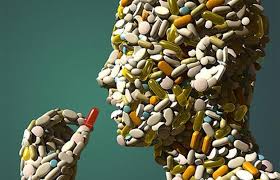
There are a lot of Consequences of Self Medication and Drug Overuse. So many victims of frequent headaches often take painkillers. When their headaches occur often, they react by taking painkillers often. After a short time, they may notice that they’re taking painkillers almost every day. They’re taking medicine more and more frequently and yet experiencing more and more days of headaches.
Self Medication

Medication overuse headaches
The typical victim notices that the headaches are occurring more frequently in spite of taking painkillers frequently. The increased headaches are probably occurring because of the increased use of painkillers. The headache victims later enter a self-inflicted, vicious cycle in which the medications taken are making the headaches worse and less treatable. This condition is known as medication overuse headaches or analgesic-rebound headaches. An analgesic is a painkiller and “rebound is a bounce-back. In this case it’s pain in the head that’s bouncing back from the temporary relief afforded by the last dose of painkilling medication.
Self Medication and Drug Overuse medication are not only with prescription-strength painkillers, but also with over-the-counter analgesics like aspirin, acetaminophen, ibuprofen and naproxen. When caffeine is used as part of an analgesic combination, it can be a culprit, too. It cannot be avoided by periodically replacing one painkiller with another. As far as the medication overuse headache is concerned, one painkiller is about the same as another.
How can a victim overcome?
Another serious thing is that medication overuse headaches are difficult to get out from. It’s better to avoid making that mistake in the first place. It’s easier to avoid it than to get out of it.
Victims of frequent headaches live from moment to moment with their pain. It’s easy to see how they get into a pattern of taking lots of painkillers. To them, yesterday and tomorrow are not relevant. What they know is that they’re hurting now so they have to take action. They grab their bottle of over-the-counter or prescription-strength painkiller and deal with that moment’s pain. The painkiller actually affords temporary benefit but after another 4-24 hours, when the pain is bouncing back, they’re in the same position they were in previously, and grab another round of painkillers.
In summary, it’s difficult for patients with medication overuse headaches to see the big picture or adopt a long-term perspective.
Frequent use of painkillers transforms the original headache disorder from whatever it started as maybe migraine, tension-type headaches or even a combination of the two into a condition that is worse. The painkillers swamp the original headache disorder and make it into a new problem with different characteristics. Specific treatments directed toward the original headache disorder are ineffectual until the medication overuse headaches (MOH) phenomenon washes out.
Stopping Self Medication &Washing out medication overuse headaches
The MOHs don’t wash out until the headache victim stops taking the painkillers and does so on a sustained basis. It can take up to two months for MOHs to wash out. The definitive approach is to do without Self Medication entirely. While one can prevent MOHs by not taking analgesics more than 10-12 days per month, once MOHs are present, decreasing the use of painkillers to just 10-12 days per month is probably not sufficient to make them go away. The cleanest approach is to avoid them entirely. And the goal of doing so is to get back to the original headache disorder. Once the analgesic-rebound headaches have subsided, then the original headache disorder can be treated with more targeted treatments. You can contact us at Medvacc Pharmacy for more direct help.
The program components to help stop Self Medication
Stopping the painkillers and tracking each day’s headache symptoms with a recording system. The recording system doesn’t need to be fancy, and can be as simple as rating each day’s pain as none, mild, moderate or severe. The important thing is that the patient records each day’s pain experience before the day is done. This tool helps both the patient and the doctor to see the big picture and gain a long-term perspective. Also, each month’s recordings can be converted to numbers and compared with any other month’s results.
Sometimes it is useful to prescribe a “preventive” medicine only if the patient understands that it is not a replacement for the more important change of doing without painkillers. When prescribed, the main purpose is to reduce the numbers of migraine and tension-type headaches once the analgesic-rebound syndrome has washed out. The preventive medication is nice but if it distracts the patient from stopping their analgesic, then it isnt good.
To shop as Hospital or Pharmacy, you can follow us on vaccines.medvacc.com

